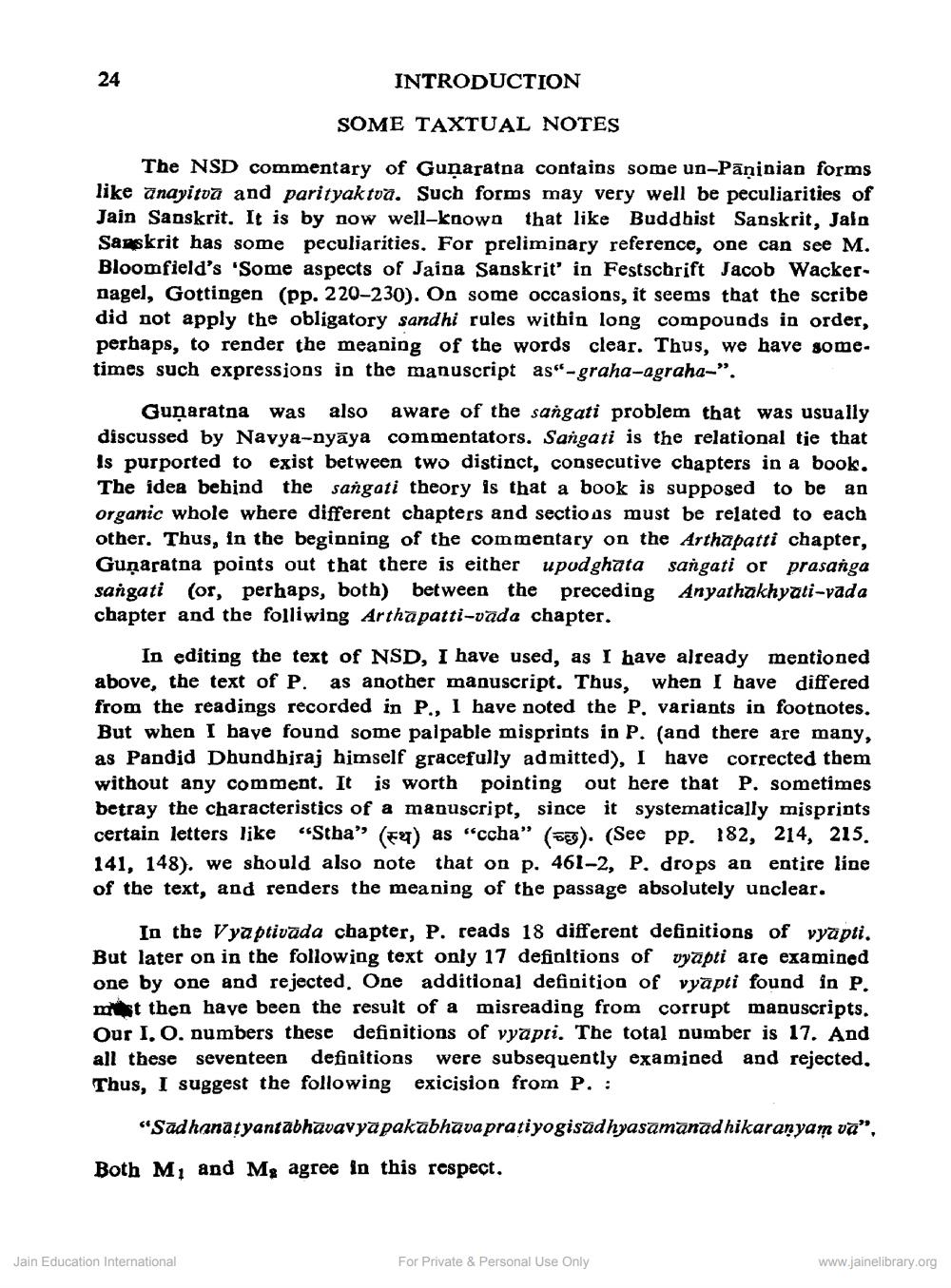________________
INTRODUCTION
SOME TAXTUAL NOTES
The NSD commentary of Gunaratna contains some un-Pāṇinian forms like anayitva and parityaktva. Such forms may very well be peculiarities of Jain Sanskrit. It is by now well-known that like Buddhist Sanskrit, Jala Sanskrit has some peculiarities. For preliminary reference, one can see M. Bloomfield's 'Some aspects of Jaina Sanskrit' in Festschrift Jacob Wackernagel, Gottingen (pp. 220-230). On some occasions, it seems that the scribe did not apply the obligatory sandhi rules within long compounds in order, perhaps, to render the meaning of the words clear. Thus, we have sometimes such expressions in the manuscript as"- graha-agraha-".
Gunaratna was also aware of the sangati problem that was usually discussed by Navya-nyāya commentators. Sangati is the relational tie that Is purported to exist between two distinct, consecutive chapters in a book. The idea behind the sangati theory is that a book is supposed to be an organic whole where different chapters and sections must be related to each other. Thus, in the beginning of the commentary on the Arthapatti chapter, Guņaratna points out that there is either upodghata sangati or prasanga sangati (or, perhaps, both) between the preceding Anyathakhyati-vada chapter and the folliwing Arthapatti-vada chapter.
In editing the text of NSD, I have used, as I have already mentioned above, the text of P. as another manuscript. Thus, when I have differed from the readings recorded in P., I have noted the P. variants in footnotes. But when I have found some palpable misprints in P. (and there are many, as Pandid Dhundbjraj himself gracefully admitted), I have corrected them without any comment. It is worth pointing out here that P. sometimes betray the characteristics of a manuscript, since it systematically misprints certain letters like "Stha” (FT) as "ccha" (63). (See pp. 182, 214, 215. 141, 148). we should also note that on p. 461-2, P. drops an entire line of the text, and renders the meaning of the passage absolutely unclear.
In the Vyaptivada chapter, P. reads 18 different definitions of vyapti. But later on in the following text only 17 definitions of vyāpti are examined one by one and rejected. One additional definition of vyapti found in P. must then have been the result of a misreading from corrupt manuscripts. Our I. O. numbers these definitions of vyapri. The total number is 17. And all these seventeen definitions were subsequently examined and rejected. Thus, I suggest the following exicision from P.
"Sadhanatyantabhavavyapakabhava pratiyogisādhyasamanad hikaranyam va",
Both M, and Mg agree in this respect,
Jain Education International
For Private & Personal Use Only
www.jainelibrary.org




